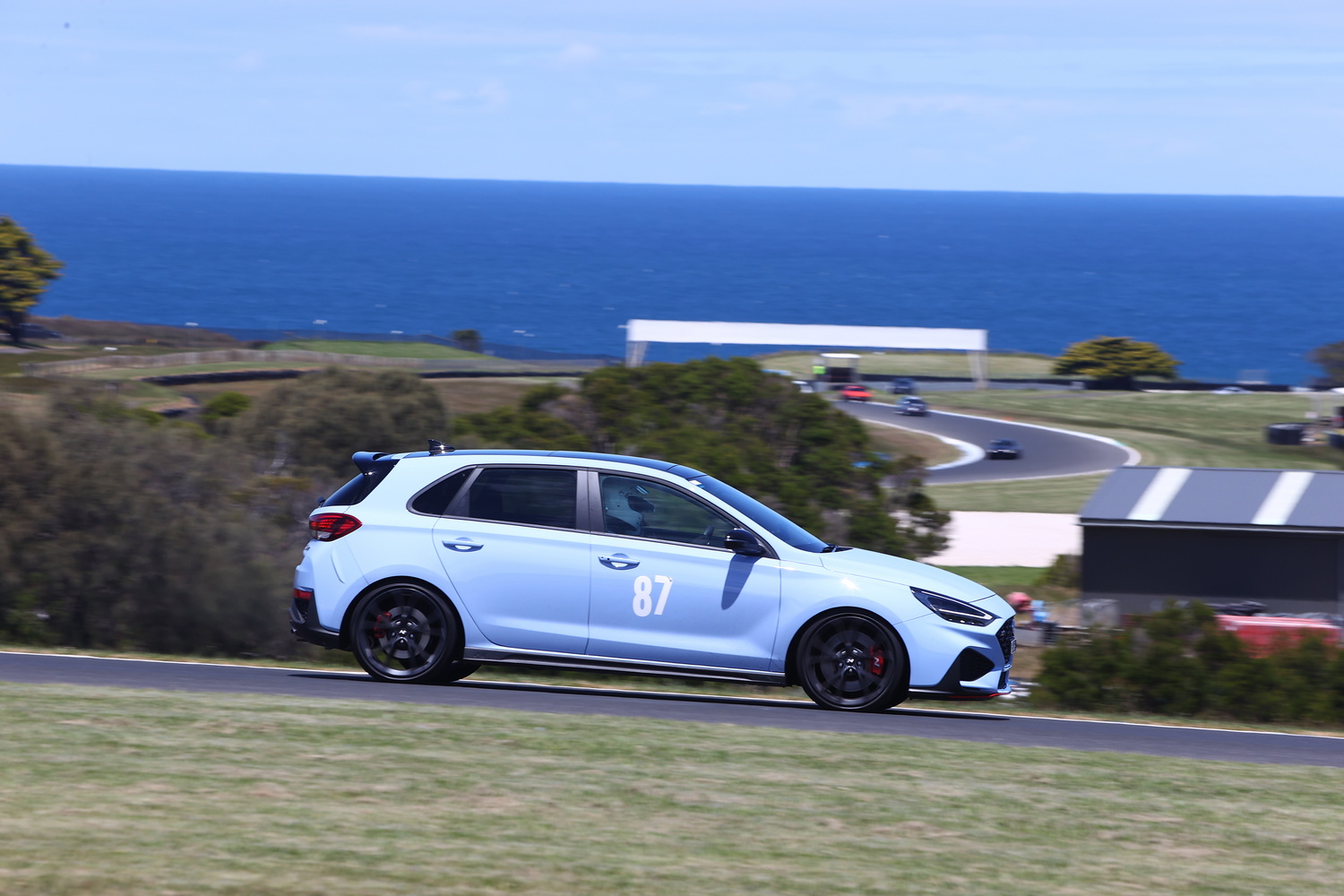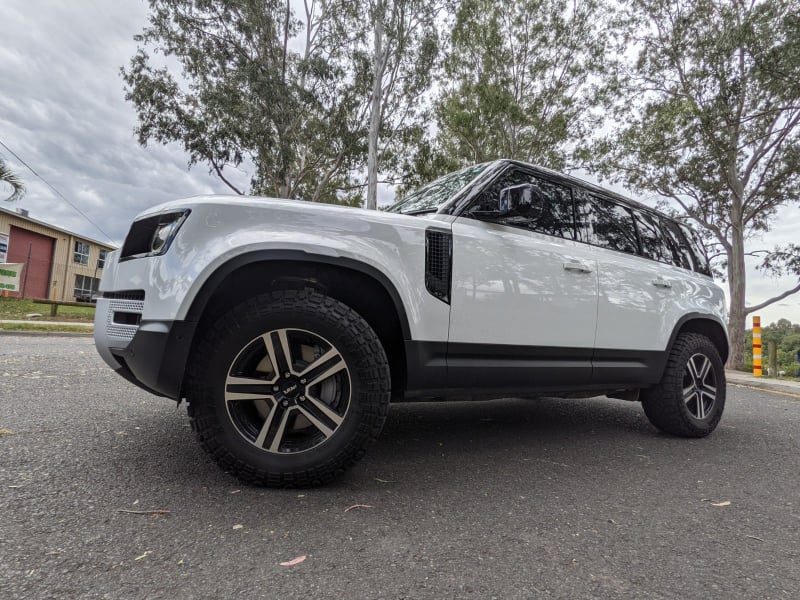
Phillip Island & Sandown Reference Track Day Laps
Going to either Phillip Island Raceway or Sandown Raceway in Victoria? Want some example laps so you know the lines? This is the page for you!
Phillip Island
Here’s a short video I put together for our club’s annual Come and Try day held towards the end of every year at Phillip Island using an Hyundai i30N Fastback N. It is designed for novices driving sports cars such as hot hatches, but the general principles hold for pretty much any roadcar.
- This track is fast, so get your vision up!
- Turn 1 is usually 5th gear
- Double-apex Turn 2, often in 4th gear, don’t swing out wide for T2 entry
And here’s a drivearound, I’ll do a better version next chance I get.
General Quick Tips
- Hands at 9-3 only. This gives you the best car control. You won’t need more than about 2/3 of a turn so no need to shuffle-steer. Later on, you will need to learn how to turn the steering wheel quickly over 360 degrees and back again to recover potentially crashable skids – watch this on Oversteer Recovery and this on Steering Techniques.
- Vision – not looking far enough ahead is the root cause of many track errors. The cones mark the turn-in, apex and track-out points. You should be looking at the next cone as you approach the current one. The faster you go, the further you look ahead. It’s hard to learn, but an essential skill. The video above shows why it’s important!
- Braking – you can brake hard initially, but the real skill is in the release of the brakes which must be smooth.
- Trail braking and transition – as you release the brakes, turn the steering wheel. At mid corner you will have reached maximum steering angle and be off the brakes. Then, as you unwind the steering wheel, smoothly apply the throttle.
- Racing line – this is shown in the video. It feels wrong, because as a road driver you’re not used to taking the entire width of the road. Also, the cones may feel wrong – that’s because you aren’t going fast to begin with, the faster you go the more the racing line makes sense. But also note that the classic line of “enter a corner from the outside” doesn’t always work for all corners, and Phillip Island is a good example at Turns 2 and 10.
- Technique not speed – it is tempting to try and drive fast, but ironically, that’s an ineffective way to learn. Instead, focus on getting things right. Then the speed comes. It it difficult for many people to mentally adjust to this way of learning, but it’s really the only way for effective improvement.
- Gears – leave automatics in Sport mode, but for manuals one tip is “use the higher gear” – so if you’re wondering if it’s 2nd or 3rd, go for third and you’ll go a bit faster, whereas if you choose the lower gear you tend to drive to the lower gear speed. Also, it can be tricky to get the car into 2nd gear at speed – this is where you need a technique called “heel’n’toe shifting” where you use two feet on three pedals to match the car/engine speed to the gear, blipping the throttle under brakes as you change gear. If you don’t do that then you can lock the rear wheels on a rear-drive car and possibly spin. Using third gear instead and bringing the clutch up slowly removes that risk. Note: Phillip Island has a lot of long, sweeping corners and it’s rare for an automatic to be smart enough to pick the right gear all the time, so when you have more experience it may be better to manually pick gears especially there’s only 6 or so to choose from.
Sandown
Lotus Elise S at Sandown. The lines hold for any roadcar. Sandown tips:
- Don’t use the kerbs through Turns 2 and 3, they’re too high for roadcars.
- Focus on a good exit out of Turn 4 so as to maximise speed down the very long straight at the back
- For cars with 6 speeds, 3rd gear is often best out of Turn 1, and through Turn 4
- 5th gear works well over the top (Turn 6)
- Ride the kerbs a little through 7 and 8, straight line it
- Use plenty of exit kerb on the final turn onto the main straight
- Sandown is hard on the brakes, so especially if you’re in a heavy, powerful car, only do 2-3 flyers then a cooldown.
The next steps
Want to do more? Welcome! Here’s a few things to consider:
- Your car – whatever you used at the Come and Try day can be used for sprinting / track days. However, it will almost certainly need upgraded brakes unless it is a something like a Lotus, Porsche or Hyundai N car. That means track/street pads and upgraded brake fluid of DOT 5.1 (not 5) or high-temperature DOT 4 for most cars. Your mechanic can change both over easily enough. You may also consider a set of track tyres and wheels as track work can be too hard on street oriented tyres – go for an all-weather track tyre such as the Yokohama AD08R.
- Your attire – you will need a car racing (not motorcycle) helmet. Ideally, this should have a HANS (head and neck restraint) system and your car should have a harness bar, but that’s expensive and difficult to fit for some cars so the Simpson Hybrid S is a good option which can be used in any car. Racing shoes are an inexpensive investment and worth it for the feel, and for some cars with limited room around the pedals they are essential.
- Other gear – a tyre pressure gauge is essential, along with at least a bicycle pump to add pressure when needed and at the end of the day (ideas in this fix-puncture video). Basic tools, even a multi-tool like a Leatherman. A GoPro or similar to record your adventures. A blue triangle to show where the car’s battery is. A wheelbrace to check wheelnuts.
- Comfort – you’ll need to dump all your gear from your car, and if you don’t have a garage then it’ll be in the open so consider the effects of the weather. Some people bring a chair, often food.
Links
- MSCA Victoria web page
- MSCA Come and Try FB page
- My Fast Cars & Trackwork playlist on YouTube
- Motorsports Australia


